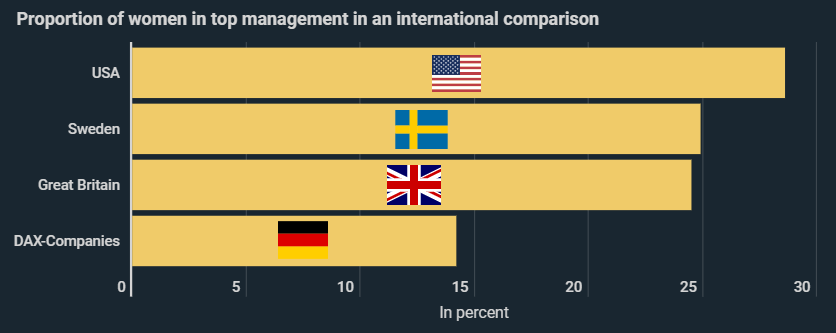Female board members at DAX-listed companies earn an average of €2.93 million, while their male counterparts earn €2.90 million. Nevertheless, considerable inequalities still exist, as can be seen in a new infographic from Kryptoszene.de. The proportion of women in senior management is a mere 14.2%, compared to 24.5% in Great Britain and 28.6% in the USA.
Female board members don’t just earn more money at DAX-listed companies. The same can also be seen at MDAX and SDAX companies, as shown in a survey by Ernst & Young. Nevertheless, the proportion of women remains extremely low – especially in an international comparison. In the year of the corona crisis, the proportion actually fell back to 2017 levels.
In September last year, there were six DAX companies without a single woman on the board. Currently there are as many as 11 such companies.
!function(e,i,n,s){var t=“InfogramEmbeds“,d=e.getElementsByTagName(„script“)[0];if(window[t]&&window[t].initialized)window[t].process&&window[t].process();else if(!e.getElementById(n)){var o=e.createElement(„script“);o.async=1,o.id=n,o.src=“https://e.infogram.com/js/dist/embed-loader-min.js“,d.parentNode.insertBefore(o,d)}}(document,0,“infogram-async“);
As you can see in the infographics, another phenomenon is evident: In the USA, 97% of the large companies with women in senior management have several women on the board. This is only the case in four out of thirty DAX-listed companies, namely Allianz, Daimler, Deutsche Telekom and Fresenius Medical Care.
This doesn’t seem to be doing the companies any favors. Data from McKinsey shows that the companies with the highest proportion of women in top management are 25% more likely to make higher profits than less diverse companies.
Women are also still underestimated by many when it comes to investment. For example, female investors in Germany achieved average returns of 24.1% in 2019, exceeding the men, who achieved an average of 23.5%.
Folgen Sie uns auf Google News









